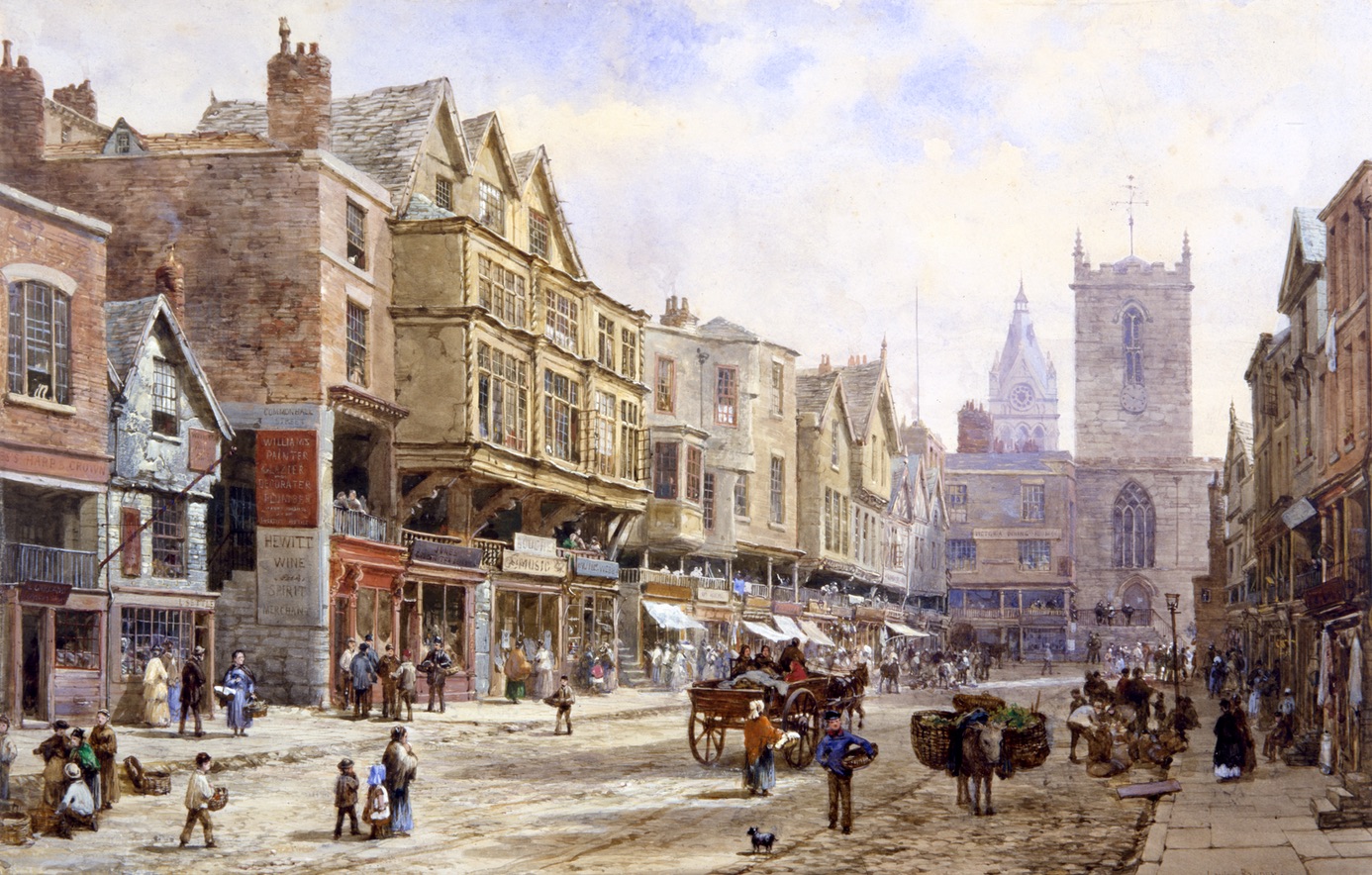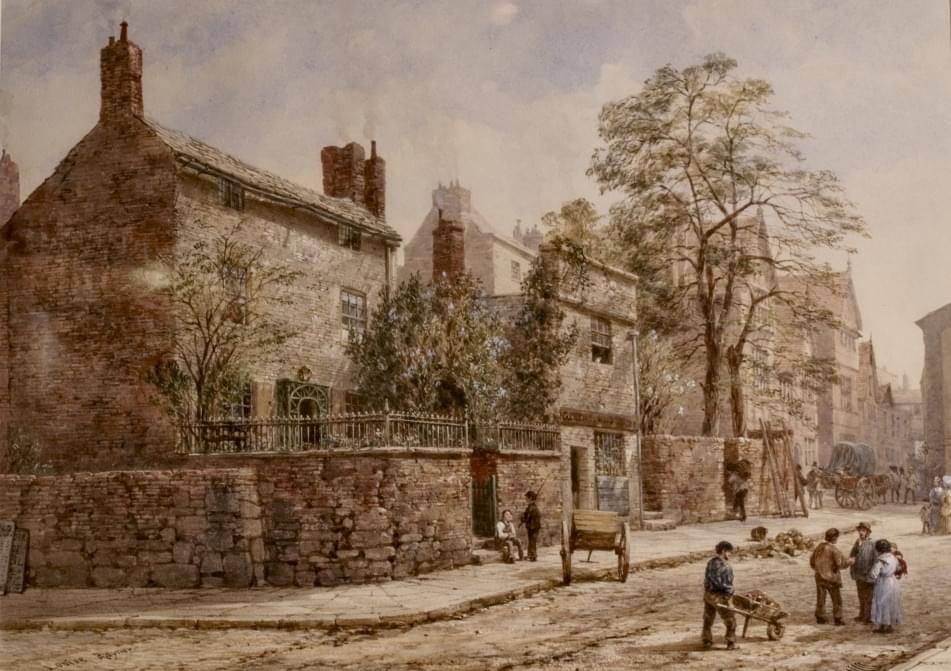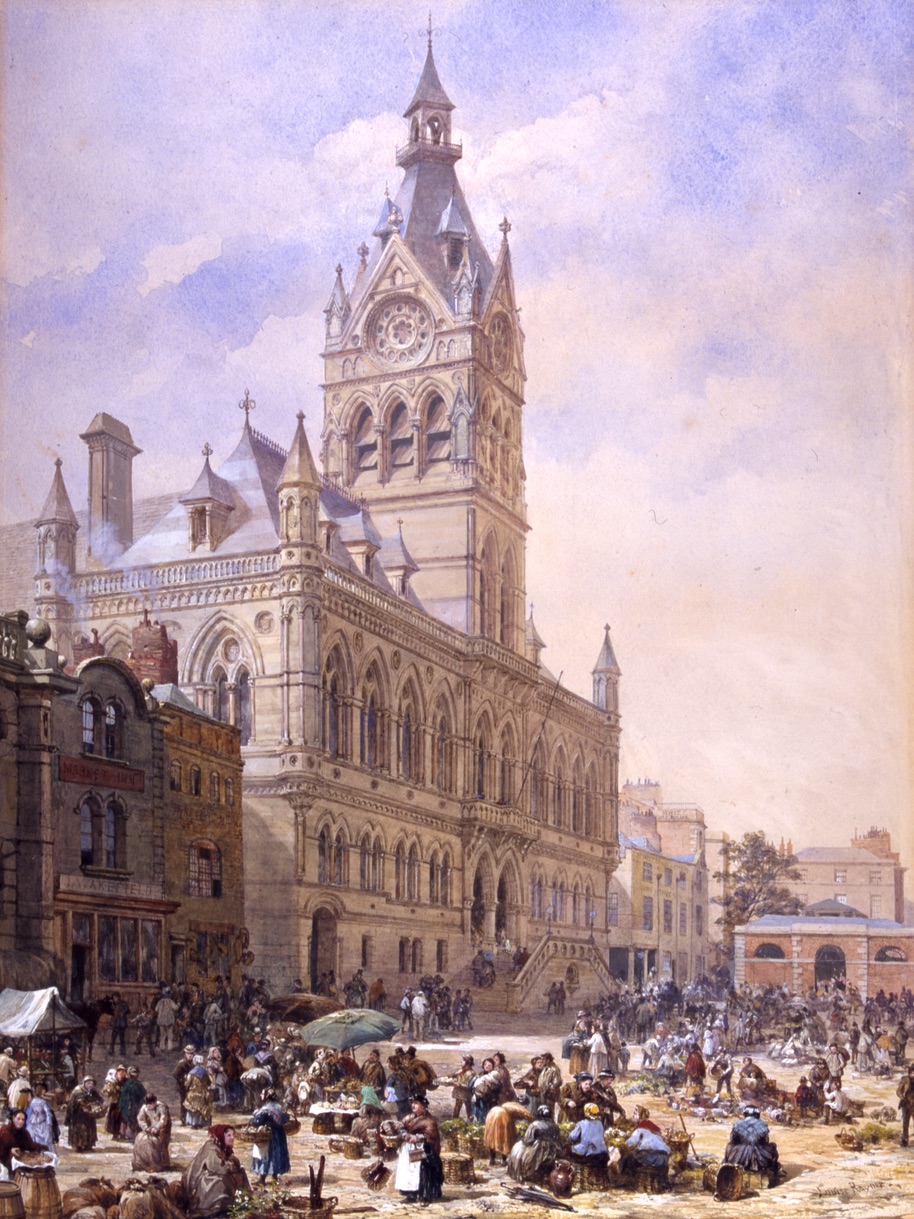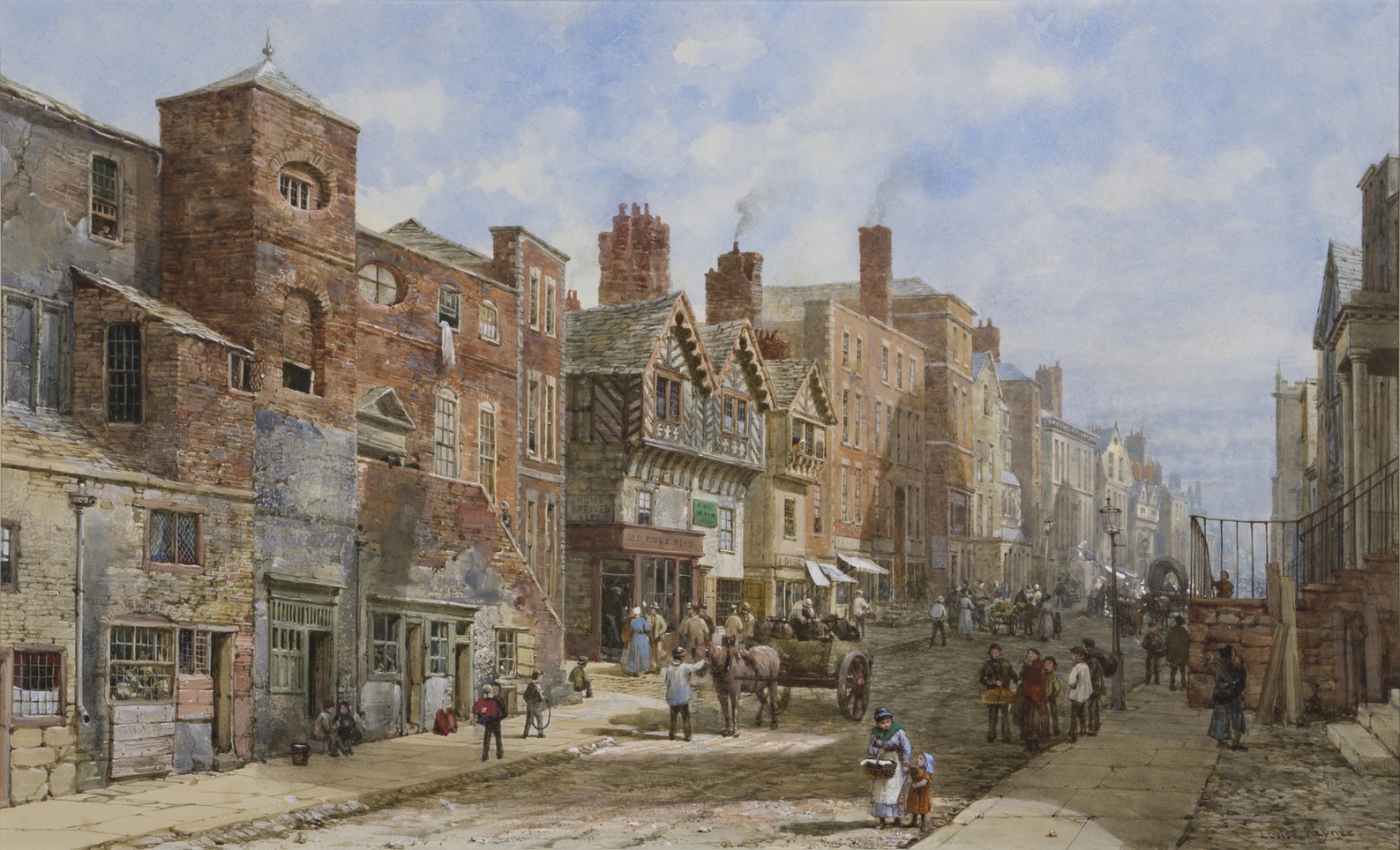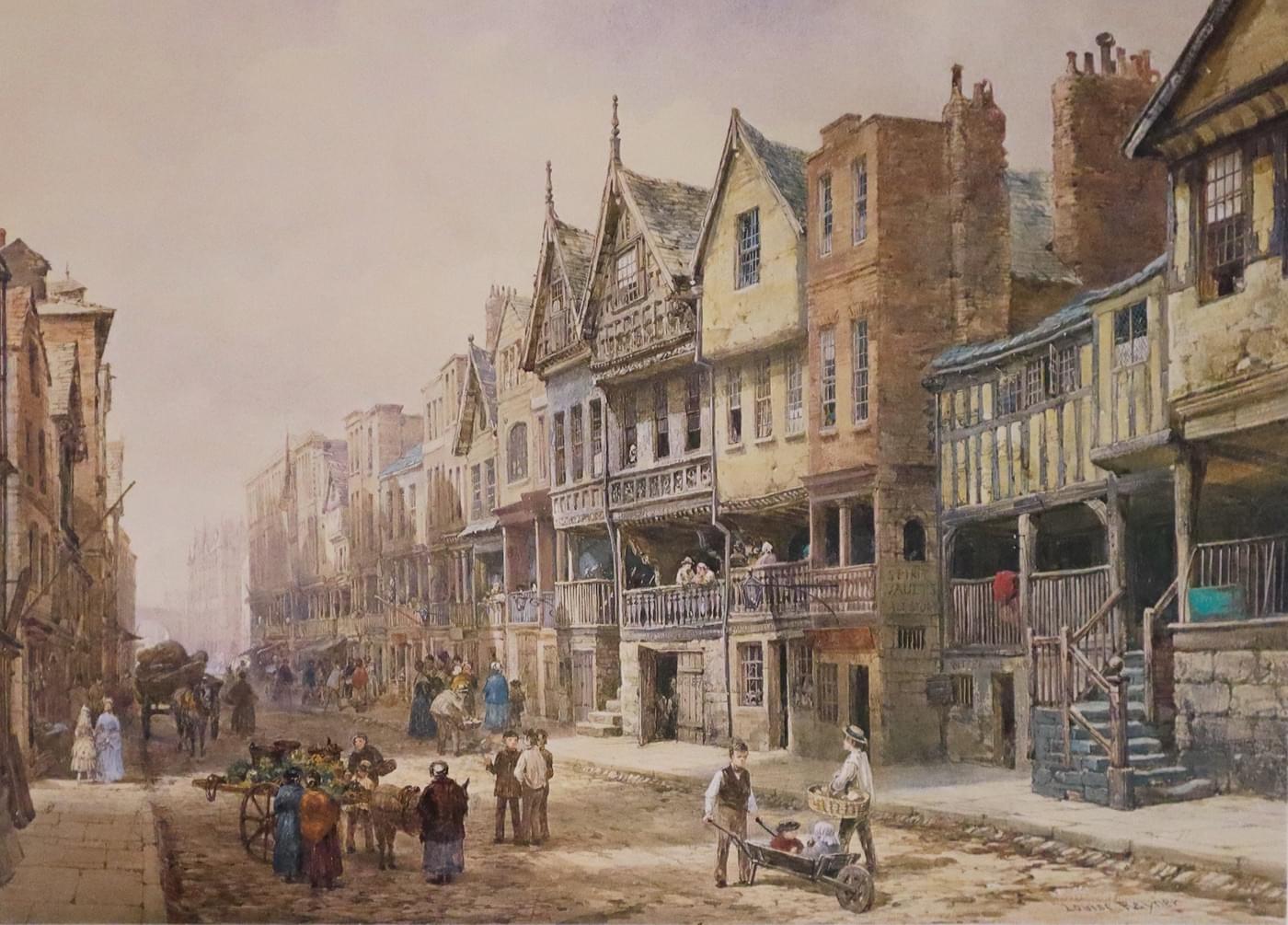CHRISTLETON
Curios and Curioser

BY PHILIP HARLAND
Louise Rayner
It seems apt to launch these forays into the wonderful world of antiques with one of Chester’s most recognised artists from the past. Not only did Louise Rayner spend four decades of her life in the 19th century living and working in the city but she also left a marvellously vibrant collection of paintings depicting, in exquisite detail the streets of Chester 150 years ago. Louise Rayner was born in 1832 in Matlock Bath, Derbyshire. Her parents were both great artists themselves as indeed were five of her siblings. After moving to Chester as a young adult she went on to paint, mainly in watercolour numerous impressions of everyday life on the streets of her adopted home. Louise Rayner’s paintings captured Victorian Chester with precise detail in summery, morning light. They are full of bustling, noisy streets where ‘ordinary’ life plays out against the backdrop of the city’s lovely architecture. Each piece is her interpretation of a busy, metropolitan centre that, over the previous century had more than doubled its population and yet, unlike other nearby urban areas had very little industry of its own. This was a Chester that already depended on tourism for its very survival and Rayner’s picturesque scenes were, without doubt marketing gems! The following paintings by Louise Rayner (many others could substitute) are great example of her meticulous attention to detail in both the portrayed architecture as well as human and animal subjects. For a fabulous, insightful exploration of Louise Rayner and her paintings do not fail to follow this link to a video in which Jessie Petheram, assistant curator of the Grosvenor Museum, Chester shares her enviable knowledge of the artist, her influence on contemporary culture and, crucially her place in the 21st century.
-

Bridge Street Chester by Louise Rayner
Bridge Street
A painting that depicts a streetscape that remains so recognisable in 2025. Or does it? It would be another century before the Chester High Cross become a major feature.
(Grosvenor Museum Collection)
St Werburgh’s Mount
This view of what is now 15 to 27 St Werburgh Street is hardly recognisable today. The Georgian buildings on the left were demolished shortly after Rayner completed this watercolour and were replaced with a tudor-style row designed by (the celebrated Chester architect) John Douglas.
(Grosvenor Museum Collection)
-

St. Werburgh's Mount in Chester by Louise Rayner
-

Chester Town Hall by Louise Rayner
The Town Hall
A wonderfully vibrant painting choc-a-bloc with local life. This was painted not that many years after the new Town Hall had been built in 1869. The Gothic Revival style must have appealed greatly to Rayner, the artist. Jessie Petheram gives some intriguing insights into this watercolour in the linked video.
(Grosvenor Museum Collection)
Lower Bridge St. looking North
A wonderful painting which not only features buildings, little changed today, such as the Old King’s Head pub but also has some delightful details: the child with a hoop, the woman hanging over a balcony observing, unobserved the street-life below, the numerous references to urban life now long gone.
(Grosvenor Museum Collection)
-

Lower Bridge Street, Chester by Louise Rayner
-

Watergate Street, Chester by Louise Rayner
Watergate looking towards Eastgate
A view that Rayner clearly loved as she completed several from around the same location. This one has fabulous details such as the two children in a wheelbarrow. The array of rooftops leading the eye to a misty Eastgate bridge is a brilliant artistic device. The Eastgate clock would be a few more years coming; Louise Rayner would have loved it!
(Private Collection)

